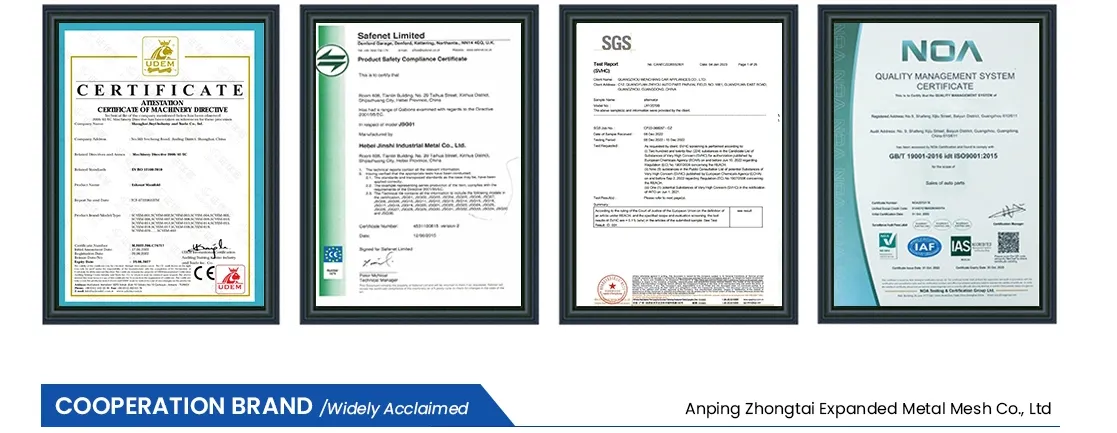The Design of Noise Barriers Essential Considerations and Best Practices
Noise pollution has become a growing concern in urban environments, largely due to increasing traffic, construction activities, and industrial processes. To mitigate the adverse effects of noise on public health and quality of life, noise barriers have emerged as an effective solution. This article delves into the design considerations and best practices for constructing noise barriers that adequately reduce unwanted sound while blending harmoniously with the surrounding environment.
Understanding Noise Barriers
Noise barriers are physical structures designed to obstruct the path of sound waves, thereby reducing noise levels in adjacent areas. Often constructed alongside highways, railways, and industrial zones, these barriers can take various forms, including walls, fences, and earth mounds. The effectiveness of a noise barrier is usually measured in terms of its sound attenuation, which refers to the reduction of sound intensity as it passes through or around the barrier.
Key Design Considerations
1. Height and Length The height of a noise barrier is crucial for its performance. A barrier must be tall enough to intercept the line of sight between the noise source and the receiver. Generally, a barrier is most effective if it is at least 3-5 feet taller than the height of the noise source. The length of the barrier is also important as it should extend sufficiently to prevent sound from bypassing the barrier at the ends, thereby ensuring comprehensive coverage.
2. Material Selection The choice of materials plays a pivotal role in the effectiveness of noise barriers. Common materials include concrete, steel, wood, and composite materials. Concrete barriers are popular for their durability and high sound absorption capabilities. On the other hand, wooden barriers may offer aesthetic benefits but can be less effective in terms of sound attenuation. The density and thickness of the material significantly influence the barrier's performance.
3. Acoustic Properties The design of noise barriers must consider the acoustic properties of the materials used. Materials with high mass are typically more effective at blocking sound. Additionally, the surface texture can impact sound reflection and absorption. For instance, rough surfaces can scatter sound waves, which may help further reduce noise levels.
noise barriers design

4. Environment and Aesthetics A well-designed noise barrier should blend into its surroundings. Urban noise barriers often incorporate aesthetic features such as landscaping or decorative elements to enhance visual appeal. The design should consider local architecture and natural surroundings to ensure compatibility with the environment. This not only improves public acceptance but also contributes to the overall urban landscape.
5. Maintenance and Durability Noise barriers must be designed for long-term durability and minimal maintenance. Factors such as weather resistance, structural stability, and ease of accessibility for repairs are essential. For instance, materials that can withstand harsh climate conditions will reduce long-term costs and ensure the barrier’s effectiveness over time.
Best Practices for Implementation
1. Site Analysis Prior to construction, a thorough analysis of the site is essential. This includes understanding the noise profile of the area, identifying the primary sources of noise, and determining the most affected receptors.
2. Community Engagement Involving the community in the design process can lead to better acceptance of noise barriers. Public meetings and feedback sessions allow residents to voice their concerns and preferences regarding the design and placement of barriers.
3. Regulatory Compliance Adhering to local regulations and guidelines is crucial in the design and implementation of noise barriers. Compliance ensures that the barriers meet safety, environmental, and noise reduction standards.
In conclusion, the design of noise barriers is a multifaceted process that requires careful consideration of various factors, including height, materials, acoustic properties, aesthetics, and maintenance. By focusing on these critical elements and engaging with the community, planners can develop effective noise barriers that not only reduce noise pollution but also enhance the urban environment. As cities continue to grow and evolve, innovative noise barrier designs will remain a vital component in promoting a quieter, healthier living space.
-
Versatility of Expanded Aluminum Metal for Various Applications
NewsMay.19,2025
-
The Geometry of Steel Gratings: Why It Matters
NewsMay.19,2025
-
Reinforcement Applications of Perforated Mesh in Masonry
NewsMay.19,2025
-
Essential Tools for Installing a Deck Mesh Railing
NewsMay.19,2025
-
Anti-Slip Flooring Made with Stainless Expanded Mesh
NewsMay.19,2025
-
Adjustable Steel Grating for Uneven Terrain
NewsMay.19,2025
Subscribe now!
Stay up to date with the latest on Fry Steeland industry news.

